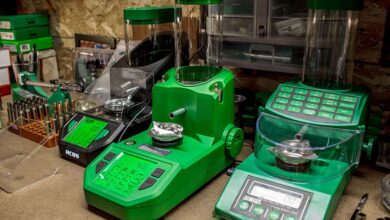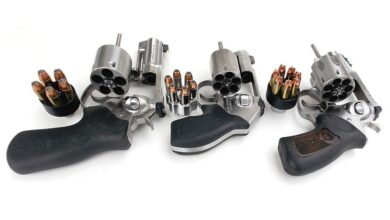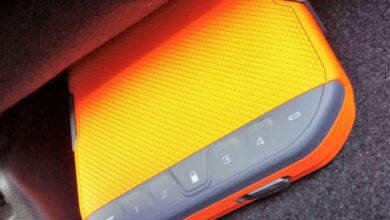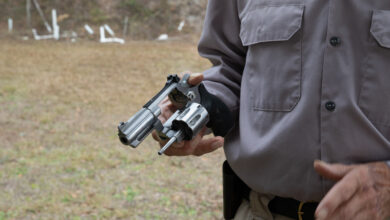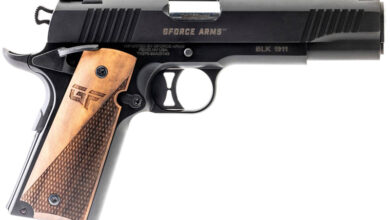Revolver Reload Part 3: StressFire Technique
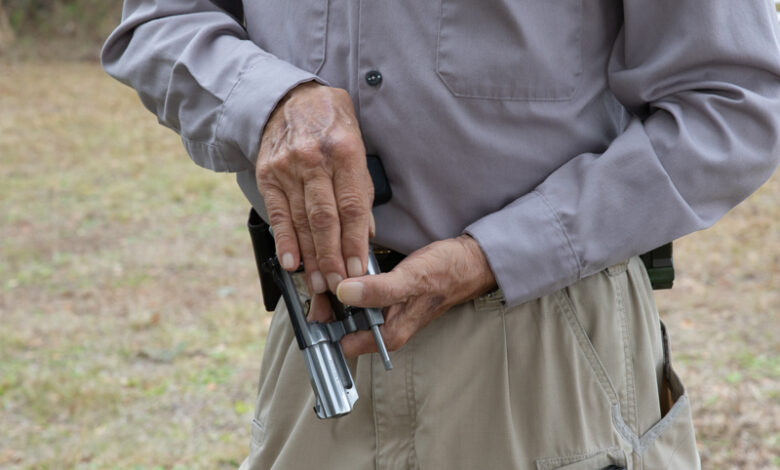
I began as a police instructor in 1972 and taught only cops until my first armed citizen class in 1981. It was a time when police were almost entirely revolver-equipped; Illinois State Police became the first major agency to adopt an autoloader as standard issue, the S&W Model 39 in 9mm, in 1967, but the next major department adoption wouldn’t come until the early 1980s.
As a full-time writer, part-time cop, and firearms/deadly force instructor, I recognized that most of those I trained had to live or die with revolvers. One of that technology’s biggest shortcomings was the limited cartridge capacity and slow reloading compared to the autos that so many criminals were bringing to the gunfights. I had seen the problems with the FBI reloading method and even the better FLETC method, discussed in Part 1 and Part 2, respectively. The shooting system I developed, StressFire, addressed that.
What is the StressFire technique?
In the StressFire revolver reload, the cylinder is opened in a conventional manner, and then the muzzle is turned upward while the left hand of the right-handed shooter (we’ll get to southpaws momentarily) delivers one sharp downward slap to the ejector rod, as seen in the lead photo above. The left hand is now ideally placed to grasp the open cylinder with the left thumb, and the fingers of the right-hand close around the front of the frame and trigger guard, freeing the dexterous right hand to grab and insert the fresh cartridges.
During the insertion, the gun is brought to the midline of the body, the butt against the belly at the centerline, instead of the hands floating out in front of the body. This creates three speedloading advantages.
(1) It points the muzzle straight down, maximizing the gravity advantage of speedloaders dropping cartridges into the chambers.
(2) It keeps the gun at a single point instead of floating out in front of the body, which enhances reloading speed.
(3) By keeping the gun in the exact same place (butt against belly), it allows the hand with the speedloader to get to the cylinder more quickly and surely.
When reload is complete, let the loader fall away. The left hand is positioned to close the cylinder with the base of the thumb and slide immediately into a two-hand hold as the gun is brought back up to continue firing.
Southpaw Version
The above description is for the right-hand-dominant shooter. As noted in Parts 1 and 2 of this series, the FBI and FLETC revolver reloading techniques were geared for right-handed shooters, and southpaws were usually taught to simply change hands and reload like their right-handed fellow officers. We developed a left-handed variation, which works as follows.
Any left-handed revolver shooter can operate the rearward-moving cylinder release latch of the Colt-type revolver with their left trigger finger. The forward-sliding cylinder release latch (think Smith & Wesson) or the press-in release latch of the Ruger or Kimber revolver can be released with a strong left trigger finger, but not all hands are strong enough for that.
For those guns, I recommend bringing the left thumb over the hammer to the left side of the gun to activate the release. For any lefty, the right hand now rises a short distance from its two-hand grasp, and the right thumb pushes the cylinder out of the frame. That right thumb now takes a firm hold of the frame with the fingers in front of the frame and trigger guard while the left hand comes up to do a sharp downward slap, fingertips forward toward the threat and guided by the felt index of the barrel, to eject the spent casings. The right hand now brings the gun butt to the centerline while the dominant left hand performs the dexterity function of reloading the cylinder. When that is done, the left hand resumes its firing grasp on the frame as the fingers of the right hand close the cylinder as the hands slide back into the firing position to continue shooting.
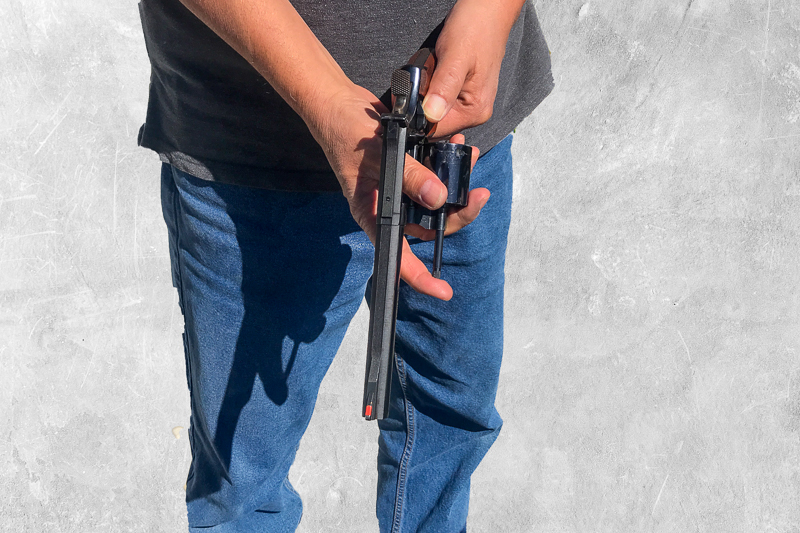
Good News
Whether done right-handed or southpaw, fingers are never in contact with the hot forcing cone area of the barrel. The left hand slapping the ejector rod and guided by the barrel by feel eliminates the slapping hand coming in at an angle that can conceivably bend the ejector rod. Nothing burns the hand. The “butt to belly” element can keep the muzzle straight down, guaranteeing gravity assistance with all the rounds fully seating in the chambers.
This left-handed version is actually faster than the right-handed version by a small margin since the reloading hand gets to work on the open side of the cylinder and doesn’t have to reach over the back of the revolver. The southpaw gets to use his or her most dexterous hand for the dexterity-intensive task of inserting six cylindrical objects into six exactly-sized holes.
Other Advantages
Another advantage (for right-handed shooters, at least) is an optional variation: getting as far as ejecting the empties and then bringing butt to belly, the right-handed shooter can simply insert a speedloader with their left hand. Because this is dexterity-intensive, as noted earlier, this technique will work best for the shooter who is ambidextrous or practices frequently since reloading a revolver is dexterity-intensive, and Mother Nature wants us to use our more dexterous hands to perform such functions.
Nonetheless, it is helpful to know because, in concealed carry, it is easier to hide a speedloader on the belt opposite the holster side. A left-handed reload works better with a straight-push speedloader such as the Safariland or Jet-Loader brands than with turning-knob-release designs like the uber-popular HKS or the Five-Star. With the latter, the left-handed shooter would use the right index finger through the frame’s cylinder window to stabilize the cylinder while the speedloader’s release knob is turned.
Bad News
To achieve repeatable smoothness and speed, the StressFire reload is a little more complicated in some respects. For example, a right-handed StressFire reload is enhanced if the shooter rolls the revolver back in the right hand before the ejector rod strike, letting the web of the right hand come up under the hammer and allowing the right thumb to hold the cylinder all the way out of the gun to guarantee positive ejection and positive speedloader insertion.
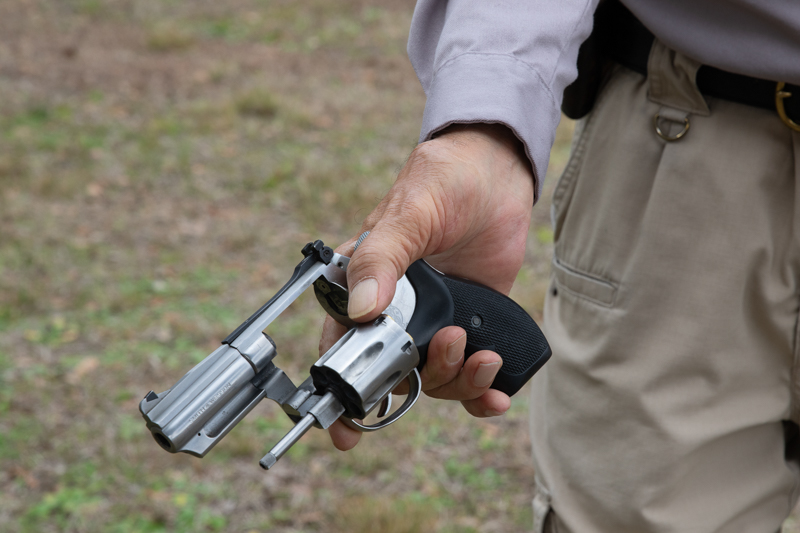
To Each Their Own
Over the decades, I’ve found that it’s much easier to teach the StressFire technique to a new shooter than to someone who is habituated to the FBI or FLETC techniques.
Whatever reload technique you want to use, we all know a speedloader is the fastest way to get a swing-out cylinder revolver back up and running when it’s empty. It is critical to hold the speedloader correctly!
Back in the day, a fellow named Kubik came up with a speedloader that didn’t stand the test of time, but a technique that did: hold the loader with the fingertips ahead of the bullet noses. This shapes the hand to the shape of the loader and, therefore, the shape of the cylinder. Even in the dark, when your fingertips touch the cylinder, a light “jiggle” of the hand will get the rounds into the chambers, at which time you release the payload.
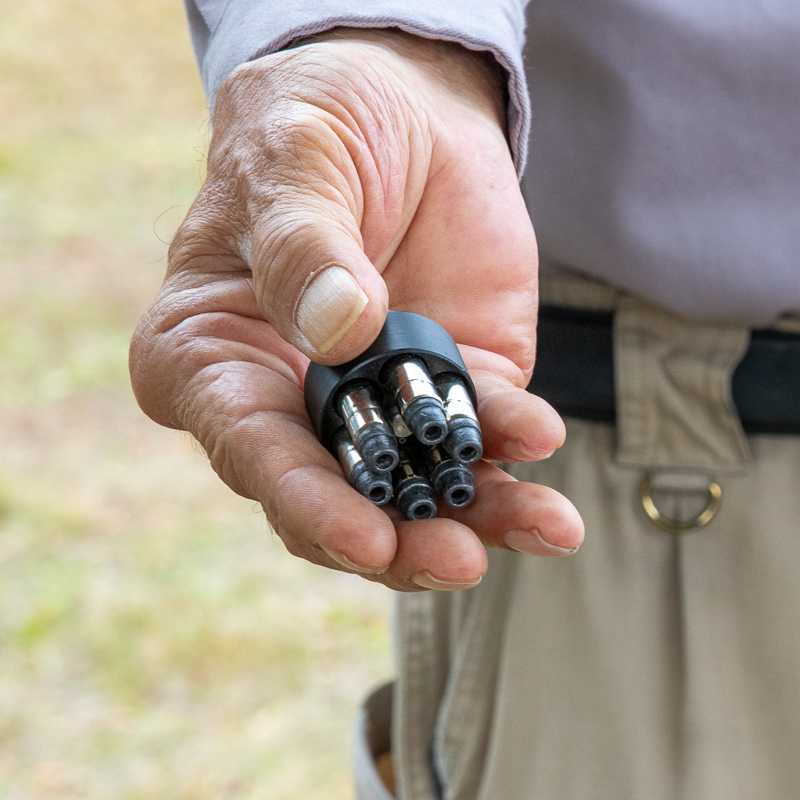
In Perspective
It is helpful to see these techniques in action. Years ago, on Gail Pepin’s ProArms Podcast, I demonstrated the StressFire reload for both right- and left-handed users.
Of course, not every revolver user has speedloaders. We need to look at reloading from belt loops, 2-by-2-by2 pouches, dump pouches, “speed strips,” and even a fistful of loose cartridges.
We will cover that soon as the revolver reloading series continues here at The MagLife.
The post Revolver Reload Part 3: StressFire Technique appeared first on The Mag Life.
Read the full article here

